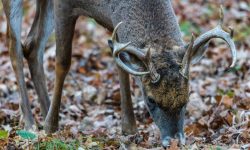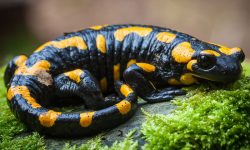Crawdads—also known as crayfish, crawfish or freshwater lobsters—are fascinating crustaceans found in streams, ponds, lakes, marshes and slow-moving rivers across the world. With their hardy shells, curious behaviors and bottom-dwelling lifestyle, they play an essential role in freshwater ecosystems. Understanding what crawdads eat reveals how they survive in murky waters, clean aquatic habitats and maintain population health through constant scavenging and opportunistic feeding.
Crawdads are omnivorous, highly adaptable and surprisingly efficient foragers. Unlike many aquatic species that rely on a narrow diet, crawdads consume nearly anything they can catch, shred or scavenge. Their claws act as both weapons and utensils, allowing them to disassemble plant matter, capture small prey and break down decaying material. This diverse diet supports growth, molting, reproduction and survival through harsh seasonal changes.
This guide explores 20 wild foods crawdads consume most, offering an in-depth look at how these resourceful creatures feed in natural habitats and why their diet shapes entire freshwater ecosystems.
Understanding the Crawdad Diet

Crawdads feed primarily during dusk, night and early morning hours. Their antennae detect chemicals and vibrations in the water, guiding them toward food sources hidden beneath mud, rocks or decaying vegetation. Unlike fish, crawdads rely more on touch and scent than vision, making them well suited for cloudy waters and dark environments.
Their diet shifts depending on habitat, age and season. Juvenile crawdads eat smaller, softer foods such as algae, worms and microorganisms. Adults consume larger prey and tougher plant materials, expanding their diet as their claws and mandibles strengthen. During molting periods, crawdads seek calcium-rich foods to help rebuild their shells.
Because crawdads eat both living and dead organisms, they act as natural recyclers, keeping freshwater ecosystems clean and nutrient-balanced. Their feeding activities reduce waste buildup and support a healthy food web for fish, amphibians, insects and aquatic plants.
20 Wild Foods Crawdads Consume Most
1. Aquatic Plants
Aquatic plants form a core part of a crawdad’s diet, especially in shallow ponds and marshes. Crawdads nibble soft stems, leaves and roots, targeting species like waterweed, pondweed and water lilies. These plants supply vitamins and fiber that support healthy digestion.
Crawdads use their claws to tear plant tissue into bite-sized pieces. They often sit beneath submerged foliage, feeding methodically and leaving behind shredded fragments. Plant beds also offer shelter, helping crawdads feed unseen by predators.
During warm months, aquatic plants become abundant, giving crawdads steady access to easy-to-digest nutrition.
2. Algae
Algae grows across rocks, underwater logs and sediment surfaces, providing constant food for crawdads of all ages. Young crawdads rely heavily on algae because of its soft texture and high nutrient absorption rate.
Crawdads scrape algae using their claws or mouthparts, often grazing along shallow edges where sunlight enhances algal growth. The biofilm that forms on surfaces also contains microorganisms that add protein and minerals.
Algae serves as a dependable food source year-round, particularly in clear waters with steady sunlight.
3. Detritus (Decaying Plant Material)
Detritus—broken-down leaves, stems and organic debris—makes up a huge portion of a crawdad’s natural diet. As plant matter settles at the bottom of rivers or ponds, crawdads sift through it for nutrients.
This decaying material contains microbes and soft plant fibers that crawdads digest easily. They rake through leaf piles with their claws, pulling apart decaying pieces and ingesting nutrient-rich fragments.
Detritus ensures crawdads have food even during winter or dry seasons when fresh plants become scarce.
4. Small Fish (Dead or Weak)
Crawdads seldom hunt live fish, but they eagerly consume dead, injured or slow-moving ones. These protein-rich meals provide essential energy that supports growth and molting.
When crawdads detect the scent of decaying fish, they move quickly toward the source. Their claws allow them to tear flesh into manageable portions, often feeding alongside other scavengers.
Fish carrion becomes especially important after storms, seasonal die-offs or low-oxygen events that cause small fish to perish.
5. Insect Larvae
Insect larvae, including mayfly nymphs, caddisfly larvae and mosquito larvae, are prime prey for crawdads. These nutrient-packed invertebrates reside in mud, under rocks or among vegetation.
Crawdads dig through sediment or overturn stones to find larvae hiding underneath. Their quick reflexes help them seize moving prey before it burrows deeper.
Larvae offer high protein that fuels rapid growth, making them essential for juvenile crawdads.
6. Worms
Worms living in muddy riverbeds and wet soil are an easy and nutritious food source. Their soft bodies make them perfect prey for crawdads that prefer less effortful feeding.
Crawdads detect worms through vibrations in the substrate. Once found, they grasp worms firmly with their claws and consume them whole or in pieces.
Worms supply moisture, amino acids and minerals that strengthen crawdad tissues throughout their life cycle.
7. Snails
Snails appear near rocks, aquatic plants and shallow water zones. Crawdads break into snail shells using repeated claw strikes, extracting the soft meat inside.
Snails provide calcium that helps crawdads rebuild their exoskeletons after molting. Their protein content also supports reproductive health and muscle strength.
During rainy periods, when snail activity increases, crawdads take advantage of the abundance.
8. Tadpoles (Occasional)
Crawdads occasionally prey on tadpoles when they encounter them in shallow water. Young amphibians move slowly, making them vulnerable to ambush.
Crawdads grab tadpoles using their claws, quickly immobilizing them before consuming the soft tissue. Tadpoles offer rich nutrients during spring breeding seasons when amphibian activity peaks.
Though not a major food, tadpoles serve as opportunistic, seasonal protein boosts.
9. Small Frogs (Rare)
Larger crawdads occasionally feed on tiny frogs lingering near shorelines. This behavior is rare but demonstrates the crawdad’s ability to exploit available prey.
A frog caught by a crawdad is often subdued quickly using strong claws. The crawdad tears the frog into pieces, consuming the most nutrient-dense tissues first.
This predation occurs mostly in heavily vegetated areas where juvenile frogs hide.
10. Crickets (Fallen or Drowned)
Crickets and other land insects that fall into the water become easy prey. Crawdads move toward struggling insects guided by ripples and vibrations.
Once caught, crawdads break the insect into bite-sized fragments. Crickets provide protein and fats that supplement plant-based diets during summer.
This opportunistic feeding highlights the crawdad’s adaptability around water edges.
11. Aquatic Insects (Adult Forms)
Adult aquatic insects like dragonflies, mayflies and water beetles sometimes become prey when they rest on the water’s surface. Crawdads rise from the bottom to snatch them.
Their claws help them grasp fast-moving insects before they escape. This food becomes especially important in shallow streams with high insect populations.
Adult insects help balance the crawdad’s diet with a mix of proteins and trace minerals.
12. Carrion (Decaying Animals)
Crawdads are well-known scavengers that actively seek out carrion. Decaying fish, frogs or aquatic mammals provide dense calories with minimal effort.
Upon sensing decomposing material, crawdads gather around and feed collectively. Their mandibles break down flesh as bacteria soften the tissue.
Carrion feeding helps maintain water cleanliness, making crawdads essential ecosystem recyclers.
13. Mussels (Juvenile or Soft-Shelled)
Young or soft-shelled mussels become prey when crawdads find them along the river bottom. Although harder to access, crawdads pry open weakened shells using persistent force.
Once opened, the soft interior provides a nutrient-rich meal. Mussels supply minerals, proteins and moisture that benefit crawdads during molting periods.
This predation occurs most often in slow-moving streams with abundant bivalves.
14. Small Crustaceans
Crawdads occasionally feed on smaller crustaceans such as freshwater shrimp, amphipods and isopods. These tiny creatures swim slowly or cling to rocks and vegetation.
Crawdads stalk them through stealth, using claws to scoop them up before they escape. Their soft bodies offer quick energy and essential fatty acids.
These prey items are especially common in marshy environments with dense plant cover.
15. Fish Eggs
During spawning seasons, crawdads forage for fish eggs left under rocks, in vegetation or along shallow nests. Fish eggs are packed with nutrients designed to support embryonic growth.
Crawdads consume eggs individually, using delicate claw movements to avoid stirring up predators or alerting fish guarding nearby nests. Because they are easy to digest, eggs provide efficient energy.
This seasonal feeding often coincides with spring and early summer fish migrations.
16. Freshwater Clams
Soft-shelled clams living in sandy or muddy beds become occasional prey for larger crawdads. Crawdads detect clams through chemical cues or subtle movements.
With persistent effort, they crack shells just enough to access the soft tissue. Clams supply valuable protein and calcium.
This predation is more common in lakes and slow rivers rich in sediment.
17. Biofilm (Microorganism Layers)
Biofilm, a thin layer of microorganisms coating rocks and logs, is a major food for juvenile crawdads. This slimy layer contains bacteria, algae, protozoa and decaying organic particles.
Crawdads scrape biofilm using their mouthparts, absorbing nutrient-dense material. Biofilm acts as a starter food for crawdads too small to catch larger prey.
It remains a vital supplement even as they mature.
18. Leaf Litter Microfauna
Leaf litter harbors microscopic animals such as springtails, tiny worms and aquatic mites. Crawdads sift through decomposed leaves, picking out these miniature prey with their claws.
These microfauna add protein and minerals to a diet rich in plant material. Crawdads often spend hours sorting through sediment to find these hidden organisms.
This foraging technique becomes essential in forested streams with heavy leaf fall.
19. Seeds (Waterfalling or Flood-Carried)
Seeds that fall into the water or drift downstream offer surprising nutrition. Crawdads seize floating seeds or pick them out of sediment.
Seeds contain fats and carbohydrates that provide slow-release energy. Some crawdads even store seeds temporarily in sheltered spots.
This behavior becomes common during autumn when trees drop large amounts of plant material.
20. Other Crawdads (Rare Cannibalism)
Crawdads sometimes engage in cannibalism, particularly during overcrowding or molting periods. Molting individuals are soft and vulnerable, making them easy targets.
This behavior usually occurs when food is scarce, or when large individuals assert dominance over territory. Although rare, cannibalism provides high-protein nourishment.
Cannibalism also naturally regulates population size in confined or competitive habitats.
FAQs About What Do Crawdads Eat
Are crawdads omnivores?
Yes. They eat plants, animals, and decaying matter.
Do crawdads eat fish?
They eat dead or weak fish but rarely catch healthy fish.
Do crawdads clean the water?
Yes. Their scavenging helps remove waste and maintain water quality.
Do juvenile crawdads eat the same foods as adults?
They prefer algae, biofilm and tiny invertebrates.
Do crawdads eat insects?
Yes. They consume larvae, aquatic insects and drowning land insects.
Are crawdads predators?
They are opportunistic and may prey on worms, snails, larvae or small amphibians.
Do crawdads eat plants?
Yes. Aquatic plants and algae are major food sources.
Do crawdads scavenge?
Frequently—they rely heavily on carrion and decaying organic matter.
Do they eat fish eggs?
Yes, especially during spawning seasons.
Do crawdads eat each other?
Occasionally, usually during molting or crowding.
Final Thoughts
Crawdads thrive in freshwater environments thanks to their flexible, opportunistic feeding habits. By consuming aquatic plants, insects, snails, larvae, small animals and decaying matter, they maintain ecological balance and play a vital role as natural recyclers. Understanding what crawdads eat offers insight into their resilience, their importance to aquatic ecosystems and the remarkable adaptability that allows them to survive in streams, ponds, rivers and wetlands around the world.






